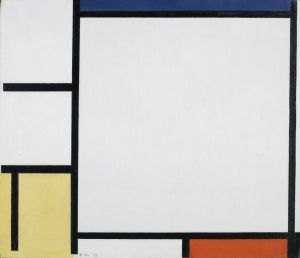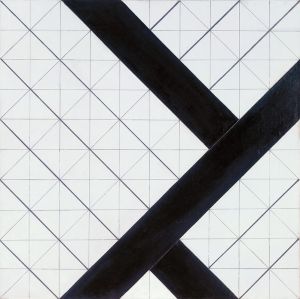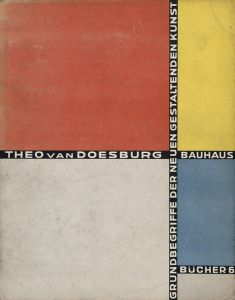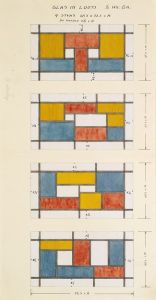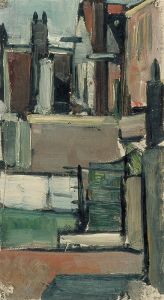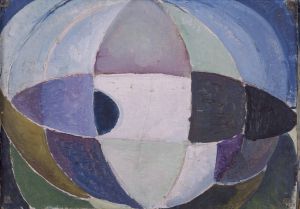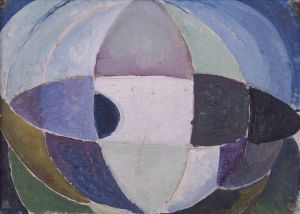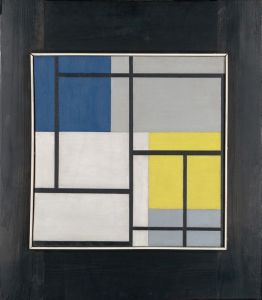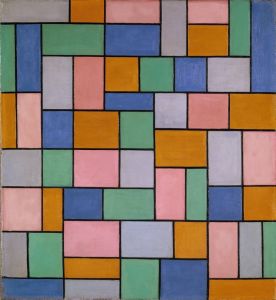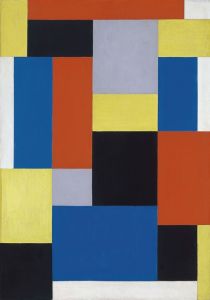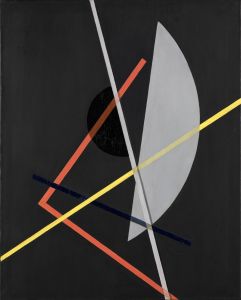
Mouvement héroïque
A hand-painted replica of Theo van Doesburg’s masterpiece Mouvement héroïque, meticulously crafted by professional artists to capture the true essence of the original. Each piece is created with museum-quality canvas and rare mineral pigments, carefully painted by experienced artists with delicate brushstrokes and rich, layered colors to perfectly recreate the texture of the original artwork. Unlike machine-printed reproductions, this hand-painted version brings the painting to life, infused with the artist’s emotions and skill in every stroke. Whether for personal collection or home decoration, it instantly elevates the artistic atmosphere of any space.
Theo van Doesburg's Mouvement héroïque is a painting created in 1916 by the Dutch artist, designer, and writer, who was a central figure in the De Stijl movement. This work is an early example of van Doesburg's exploration of abstraction, created before his full embrace of the geometric and neoplastic principles that would later define his career.
Mouvement héroïque reflects van Doesburg's interest in expressing dynamic movement and emotional intensity through abstract forms and colors. The painting features bold, sweeping lines and a composition that suggests energy and motion. The use of color in the work is striking, with contrasting tones that enhance the sense of rhythm and vitality. This approach aligns with van Doesburg's broader artistic goals during this period, which were influenced by his engagement with modernist ideas and his desire to move beyond traditional representational art.
At the time of its creation, van Doesburg was influenced by various avant-garde movements, including Expressionism and Futurism. These influences can be seen in Mouvement héroïque through its emphasis on dynamism and the emotional impact of abstract forms. However, the painting also marks a transitional phase in van Doesburg's artistic development, as he was beginning to move toward the more structured and geometric style that would later characterize his work with De Stijl.
The title of the painting, which translates to "Heroic Movement," suggests a sense of grandeur and ambition, possibly reflecting the artist's aspirations to create art that could evoke universal emotions and transcend individual experience. This theme of heroism and movement may also be connected to the broader cultural and social changes of the early 20th century, as artists sought to respond to the upheavals and transformations of their time.
Mouvement héroïque is considered an important work in van Doesburg's oeuvre, as it provides insight into his early experiments with abstraction and his evolving artistic philosophy. While it predates his collaboration with Piet Mondrian and the formal establishment of De Stijl in 1917, the painting demonstrates van Doesburg's commitment to innovation and his search for a new visual language.
Today, Mouvement héroïque is recognized as a significant example of van Doesburg's early work and a precursor to the groundbreaking contributions he would make to modern art and design. The painting is held in the collection of the Kröller-Müller Museum in Otterlo, Netherlands, where it is preserved and displayed as part of the museum's extensive holdings of modern art.





